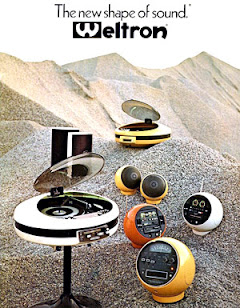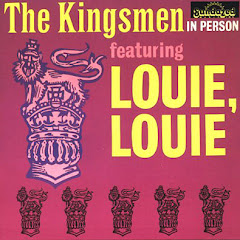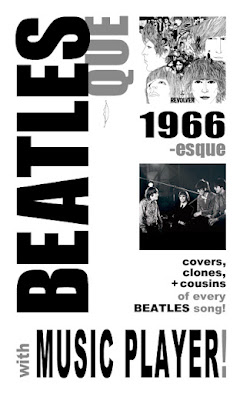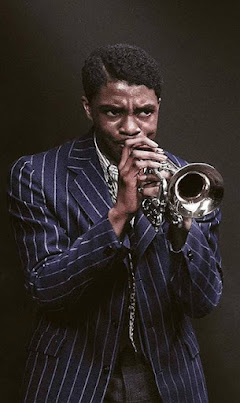now brings you the actual, all-inclusive history of Rock'n'Soul music, with Music Players.
▶ Music Player Checklist
PETER GUNN
This Music Player contains 5 hours of covers, clones, and cousins of "Peter Gunn",
from 1958 to today in chronological order, spanning all musical genres.
"Louie Louie" is a riff that underlines the whole history of Rock'n'Roll, and "Peter Gunn" shadows it on the same trail.
It was created by unusual supsects who would become the world's most wanted. Writer/director Blake Edwards created the 1958 TV show, bringing in Henry Mancini to compose the themes, who cloaked the worldly detective in a jazz-noir score of torrid sax and motor engine riffs. (They went on to make their fame with the Pink Panther films.) The pianist on the sessions was future film composer John Williams.>
It was a surprisingly sophisticated and yet street-lethal score for the fresh new world of television. In fact, with its liberal use of West Coast free jazz, it opened the door for using Jazz in movies and television from then on. The bestselling soundtrack became a hinge into modern jazz for mainstream audiences. And its fusion of dramatic intrigue and brashly sensual bop created the Crime/Spy Jazz sound, paving the grooves for the soundtracks of James Bond and all his clones.
More immediately, it captured the dangerous allure of the modern city in the fantasies of young people nationwide.
Most of all, it was the power of that striding strain that arrested their attention. "Peter Gunn Theme" was the sound of walking cocky, punching felons, chasing roadsters, talking cool, and entangling hot. It was steamy and unseemly, a grinding prowl, a hungry stare, a hip-grinding dance. It was the entirety of the forbidden side of adulthood that teenagers ached to have. "The Peter Gunn title theme actually derives more from rock and roll than from jazz," Mancini clarified.
Rock'n'Roll guitarist Duane Eddy snuck his way into the club first. His twang-bar style, with its extra heavy reverb, amped the walking bassline into a tougher strut on his 1959 cover version. While Mancini's was sassy horns swinging in a hot nightspot, Eddy's was horny young nightowls on the prowl down midnight tarmac. At least in teen fantasies, it was a sidedoor into the sleazy twilight underworld they longed to slink into. The hard clang instrumentals of Duane Eddy and Link Wray ushered in Dick Dale and Surf guitar, which kept the edgy heart of Rock'n'Roll alive into the British Invasion.
Beyond simply the riff, the moody sound evoked by Eddy mutated into a shroud of instant atmosphere. For instance, the mid-60's English bands The Lost Souls ("This Life Of Mine") and The Syndicats ("Crawdaddy Simone") aren't playing "Gunn" specifically, but their songs are clearly rewrites of its chords and sound. Same thing for instrumentals by Freddie King ("Hide Away") and James Brown ("The Scratch"). When The Monkees broke free of their producer to play on their own records, the first thing they tried was a shambling pastiche called "Peter Gunn's Gun". Its status as a standard in any upstarts' repertoire carried it through the rehearsal holes of the world. Somebody somewhere would always don its instant cool, no matter whether honest or bootleg. Jazz queen Sarah Vaughn sang a lyrical version called "Bye, Bye" in '64. Dick Dale, Jimi Hendrix, and myriad garage bands donned its trenchcoat for some midnight rambling.
In the 70's, as rock began rebelling against its overblown indulgences, the tight riff became crucial. It was like cutting to the chase with a switchblade. Boston's Jonathan Richman had admired the lethal lyrics and blunt buzz of the Velvet Underground; he and the Modern Lovers trawled the city's dusky deadends in Peter Gunn's roadster in 1974's "Pablo Picasso". (This song is most remembered for its immortal lines, "Pablo Picasso was never called an a$$hole/ not like you.") His terse hum would soon transport punks.
For punkers, this edgy sordid nightscape was their reality. It became a theme song where the usual suspects were now the heroes. You can detect it in the surging buzz of X-Ray Spex's "The Day the World Turned Day-Glo" in '78. The Cramps crimped that stalking stocatto for their mix of pychobilly, garage, and horror movies by mutating it into 1979's "Human Fly". Duane's rival, the original psychobilly Link Wray, sprungload it with new edge in his "Switchblade", with punkabillies nodding in approval. The B-52's relay that riff into an alien signal via throbbing satellite with 1979's "Planet Claire", cut through with the stabbing clang of silver surfer Ricky Wilson.
The BLUES BROTHERS movie (1980) may have done more to expose the song to a new generation that any other source; their version is fueled by the guitar of Steve Cropper and bass of Duck Dunn, of the legendary Booker T And The MG's. Conversely, out in some bleak no man's land, Bruce Springsteen hears it on his dashboard as "Mr. State Trooper", burning through the ebon byways with some bad menace in his heart. His stripped down acoustic seethes like a harrowing confession before something terrible happens. Also in 1982, German alien Nina Hagen germinated the riff with Captain Beefheart's rasp, quotes of Bowie's "Ziggy Stardust", and cascades of cosmic clang and shrill in "Iki Maska".
The title theme of the 1984 REPO MAN film, by Iggy Pop, has definite treadmarks of Peter's ride. To underscore the point, fellow acolytes Burning Sensations repo-ed Richman's carriage, putting a Duane Eddy kit on it in their "Pablo Picasso" cover for the same movie. This version is so popular that many thought it was the original.
The shamus haunts the darks of Bauhaus' "Hair Of The Dog", Front 242's "Body To Body", and L7's "Uncle Bob". Grandmaster Flash and Tthe Furious 5 flipped fresh spin on the theme with "Style (Peter Gunn's Theme)", where Flash honed back in on the horn riffs. The British Art Of Noise chopped that HipHop with some orchestral flourish, congas, and the hard twanging strut of the actual Duane Eddy himself in their "Peter Gunn", an alternative dance smash in 1986. Aussie rebels Midnight Oil called in the lawman's ghost to bust its country's guilty conscience over issues of Aboriginal land-rights with "Beds Are Burning", with the riff's phantom flickering through their 1988 breakthrough hit. (There's also brief chops of Chuck Berry's "Little Queenie" in there, too.)
Much of Mancini's original score haunted Angelo Badalamenti's brilliant music for the TWIN PEAKS TV series (1990); the clanging reverb takes possession of the title theme, while the fingersnapping hipster jazz tunes take their cues from Mancini tracks like "Brief and Breezy". Poison Ivy, the axe-slinging dominatrix of The Cramps, claims to own about every cover of "Peter Gunn" ever made; she puts her stiletto all the way through the floorboards in her ultimate version. Covertly, Peter dogs the footsteps of '90s era songs by Living Colour, Diamanda Galas, and The A-Bones.
England's vastly underrated Elastica, known for their chop shop tricks, trysted Peter with The Beatles' "And I Love Her" for a scintillating twist in their fuzzy stomp, "Love Like Ours" (2000). Iggy & the Stooges refueled their reunion in 2003 cruising Peter's night haunts with "Skull Ring", skewering the mugging partystars and glampires who have gentrified his beat. It's the propulsive bassline of The Strokes' "Juicebox" (2005). On the eternal trail, the flatfoot still pounds the beat of The Come Ons, Los Explosibvos (Mexico), and Django Django.
Have riff, will travel. That memorable hook and the atmosphere that surrounds it always resonate beyond the moment, transporting anyone who ever hears it, and forging new paths into the future.
© Tym Stevens
See Also:
• The Legacy of LOUIE LOUIE, with Music Player!
• Shock Waves: How SURF MUSIC Saved Rock'n'Roll!, with 2 Music Players!
• JOHN BARRY: The Influence Of The JAMES BOND Sound On Pop Music, with 2 Music Players!
• John Barry > Fatboy Slim
• "Misirlou!" -The Deep History of Dick Dale's Surf Classic





































































































































3 comments:
I just want you to know, Mister, that these blog posts are going to get me fired because I...can't...stop...READING...THEM!!!!!!
Were you always this brilliant? Because, honestly? I don't usually hang out with smart people. I have a very long history of dullards so how did you slip through? =)
Keep on keepin' on, my brother!!!
For all those people who said, "Where's that smart mouth going to get you?!", I say, "Blogs!"
YOU are the encyclopedia I wish I owned! If you've not already read Alex ross's "the rest is noise"
Post a Comment